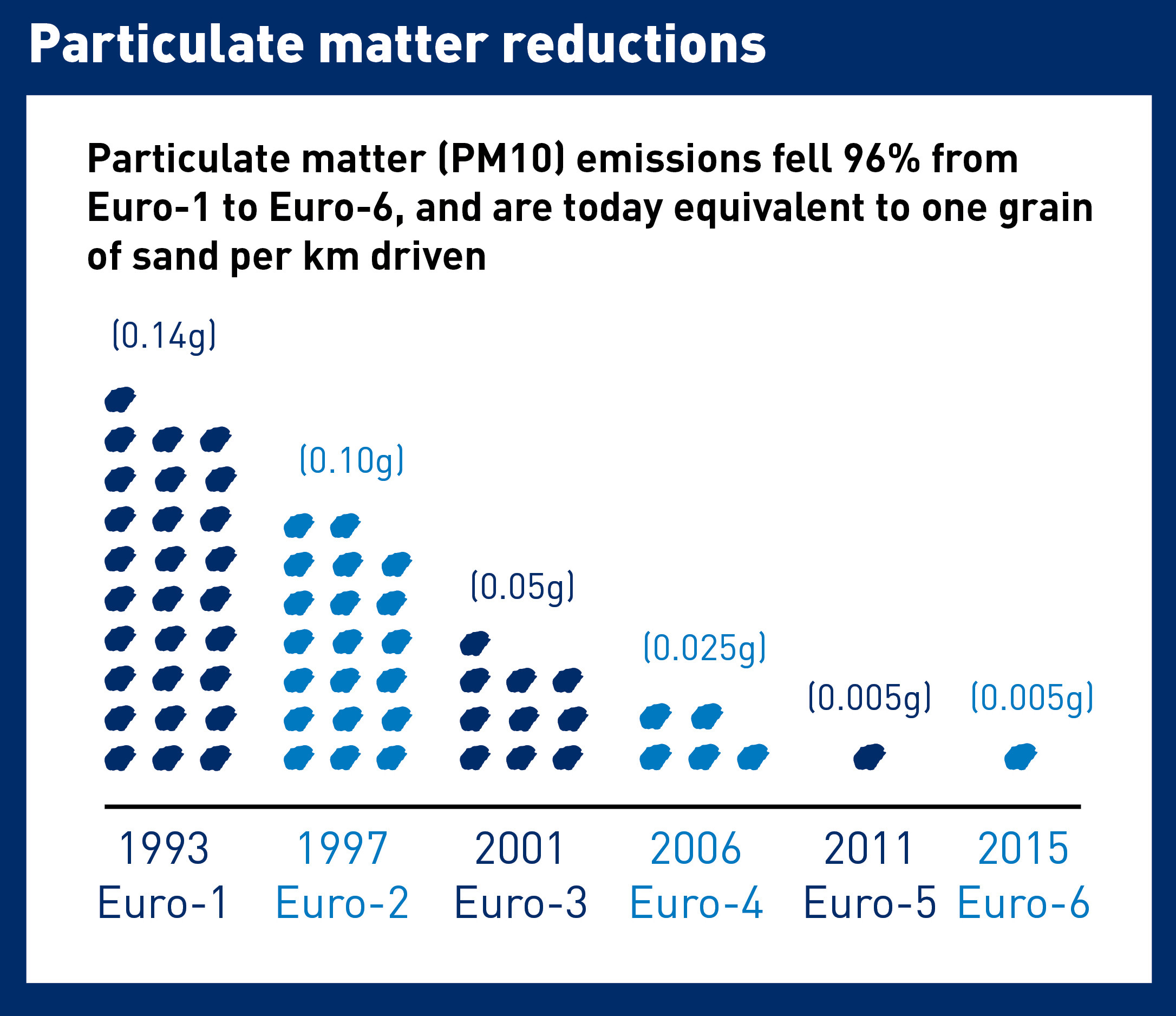It isn’t all about the exhaust: particulate matter

Particulate Matter (PM) also known as particulate pollution is a combination of liquid droplets and solid particles. It is classified as problematic if it is PM10 which is 10 micrometres and smaller and PM2.5 (known as fine particulate) which is 2.5 micrometres and smaller. That’s about 3% of the diameter of a human hair. Both can be inhaled and cause problems. Particulate dust and smoke can be seen by the naked eye, but the smaller particulars can only be seen with an electronic microscope so easily go unnoticed.
What are the effects
Larger particulate matter is irritating to the eyes and nose but as the particles get smaller it can get deep into the lungs and even into the blood stream. This can then cause serious health risks and can include:
- heart and lung disease
- heart attacks
- aggravated asthma
- decreased lung function
Children, older adults, and those with underlying health conditions are the most susceptible but anybody can be affected by it. There are also the environmental impacts of particulate matter being airborne, including hazing and smog which can make visibility very poor, but can also travel long distances unbalancing the natural environment were the particulate eventually settles entering the water systems and food chain. The vehicles producing the particulate help to spread it due to traffic induced turbulence.
What causes PM in the automotive industry
The last decade has seen a drastic reduction in exhaust related particulate even though driving behind some diesels its clear to see it’s not always working. The focus is now on non-exhaust emissions (NEE’s) which according to data from the Organisation for Economic Co-operation and Development (OECD) Environmental Policy Committee 25% of airborne particulate comes from transport. Some of the causes are:
- brake dust
- clutch dust
- road surface wear
- suspension driven road debris
- tyres
This particulate has its highest levels in built up areas where the most stop-start driving happens. At present this type of particulate is unregulated in the UK.
How can PM be tackled?
The main issues are from vehicle weight and driving style, pretty obvious really, the heavier the car the more it takes to stop it and the faster the tyres will wear – and rapid acceleration often requires hard braking. We could see a resurgence of drum brakes which did a good job of collecting a lot of this matter, ready to fall over your boots as you took the drums off for maintenance. Onboard collecting of PM is quite difficult for some systems; think tyres.
Strategies such as frequent road sweeping and washing have been trialled, but more research is needed to determine the best course of action. Driver habits may be the easiest solution to reduce PM production. Research by automotive firm Continental found that the biggest influencing factor on tyre and road wear particle generation is driving behaviour, which, it says, has an effect five times larger than the tyre material, vehicle, or climate.
Heavy vehicles, even EVs, could possibly pay in Vehicle Exercise Duty due to this extra weight and therefore the extra particulate, to help combat the problem. Paying the road fund license in this way is very similar to the framework that was in place before as the bigger, more powerful, luxury cars will pay more than the smaller run arounds. There is an argument that regenerative braking causes less PM than a vehicle using friction braking – but accurately recording and communicating braking use might be an intrusive level of data to collect from motorists.
Active travel will continue to be championed for shorter journeys, and the reduction of NEEs will make this a safer environment to encourage uptake. Fine particulate matter will remain an issue as the Government’s Air Quality Expert Group estimate that exhaust particulate matter is now lower than non-exhaust traffic related particles and they continue to consider the latter to be of growing concern to the level of fine toxins that it introduces into the air that we breathe.
The risks to health of poor air quality have been well documented, with research by the Royal College of Physicians finding that around 40,000 deaths each year are attributable to exposure to outdoor air pollution.
It’s why the automotive sector will always be pushed to improve emissions levels, whether it’s from vehicle exhausts, or other areas.





